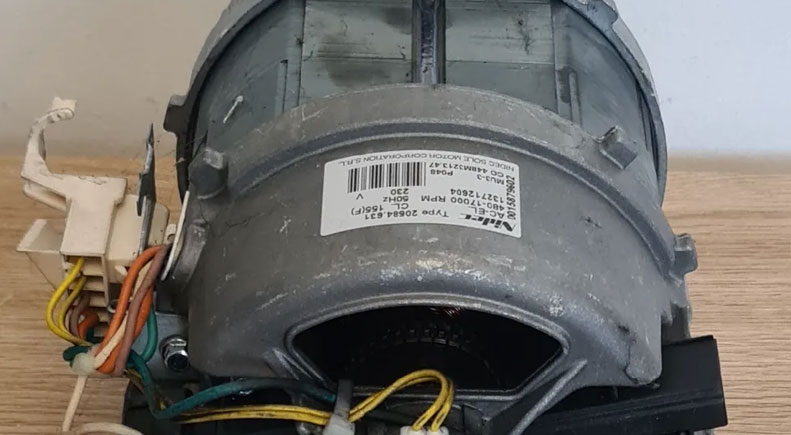
If, after starting the program, Zanussi took in water and stopped, then there are problems with the drive. In simple words, the washing machine cannot spin the drum and begin a full wash. It is impossible to immediately determine the cause of the stop: a broken belt, a faulty motor, or a control board can lead to braking.
Testing the control module, yourself at home is risky and dangerous, but checking the motor of a washing machine is quite possible. It remains to figure out where to start and how to continue.
Diagnosing the engine of a Zanussi washing machine is not an easy task, but even a “newbie” can do it. But it is better to start with theory: study the design of the machine and determine the type of installed motor. As a rule, even on modern equipment of this brand, collector motors are more often found, which are more budget-friendly and more problematic than inverter motors. A distinctive feature of the collector is the drive belt, which ensures the unwinding of the drum.
As for the internal structure of the motor, everything is standard here: rotor, stator, shaft with lamellas and winding. On top is a housing on which electric brushes and a tach generator are installed. The latter is called a Hall sensor and controls the engine speed.
Having studied the design of the motor, you can begin to diagnose it. But first, we remove the device from the Zanussi case according to the following instructions:
We put the removed engine on the table and begin diagnostics. We take a two-core wire with a cross-section of at least 2.5, stretch it from the rotor to the stator and connect to an electrical network with 220 V. If, after applying voltage, the device hums, the motor is running, if the device remains motionless, a replacement is needed.
Before you start testing, you should anticipate the risks. Firstly, this type of test is superficial and is not able to evaluate the performance of the engine at different speeds. Secondly, direct connection to the electrical network is quite dangerous, as it threatens to overheat the device. To be on the safe side, you need to include a stabilizer in the circuit, for example, a heating element. In the event of a current leak or sudden surge, the heater will take the blow, and the engine will remain unharmed.
Zanussi engine diagnostics do not end there. It is advisable to separately check the key elements of the system - electric brushes, lamellas, and windings.
Assessing the condition of electric brushes
The first thing to check is the electric brushes. In most cases, they are the cause of engine braking. These are rectangular metal “cases,” inside of which graphite rods on a spring are placed. The “coals” smooth out the frictional force emanating from the device, while at the same time being erased. If the length of the tips becomes insufficient, the engine overheats and malfunctions.
Diagnosis of brushes consists of measuring their length. We proceed like this:
The minimum length is 1.5-2 cm. If the “coal” is smaller on at least one brush, then both need to be replaced at once. The rods are selected according to the engine serial number or Zanussi itself. The best option is to remove the old cases and select new ones based on the sample.
Copyright © 2020 Coimbatore Service.